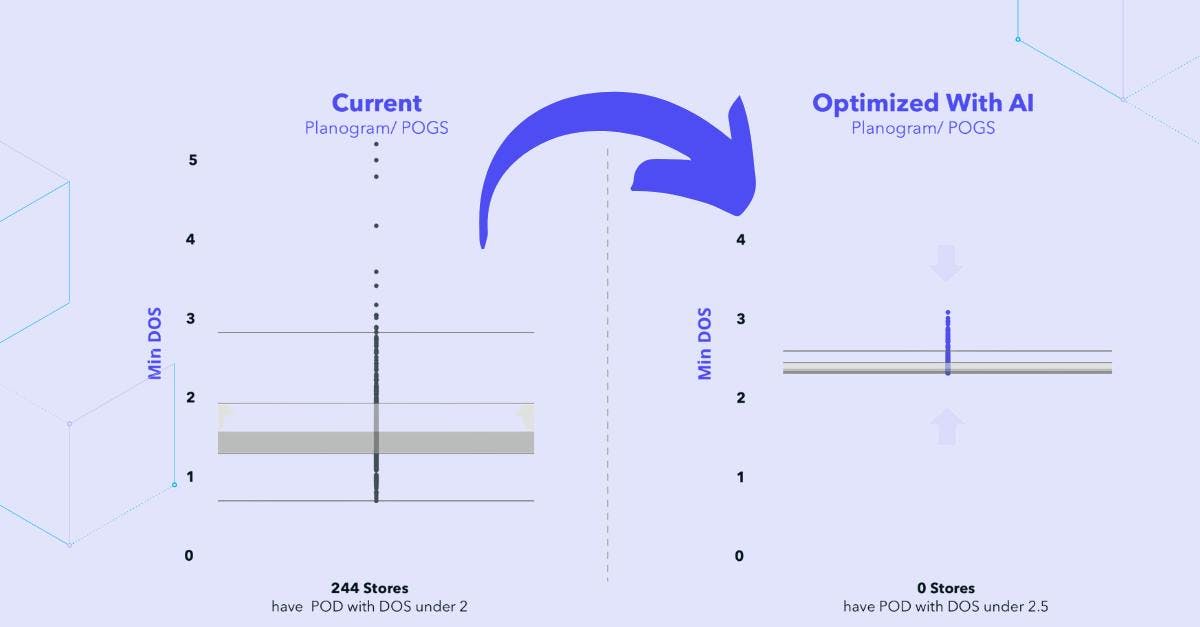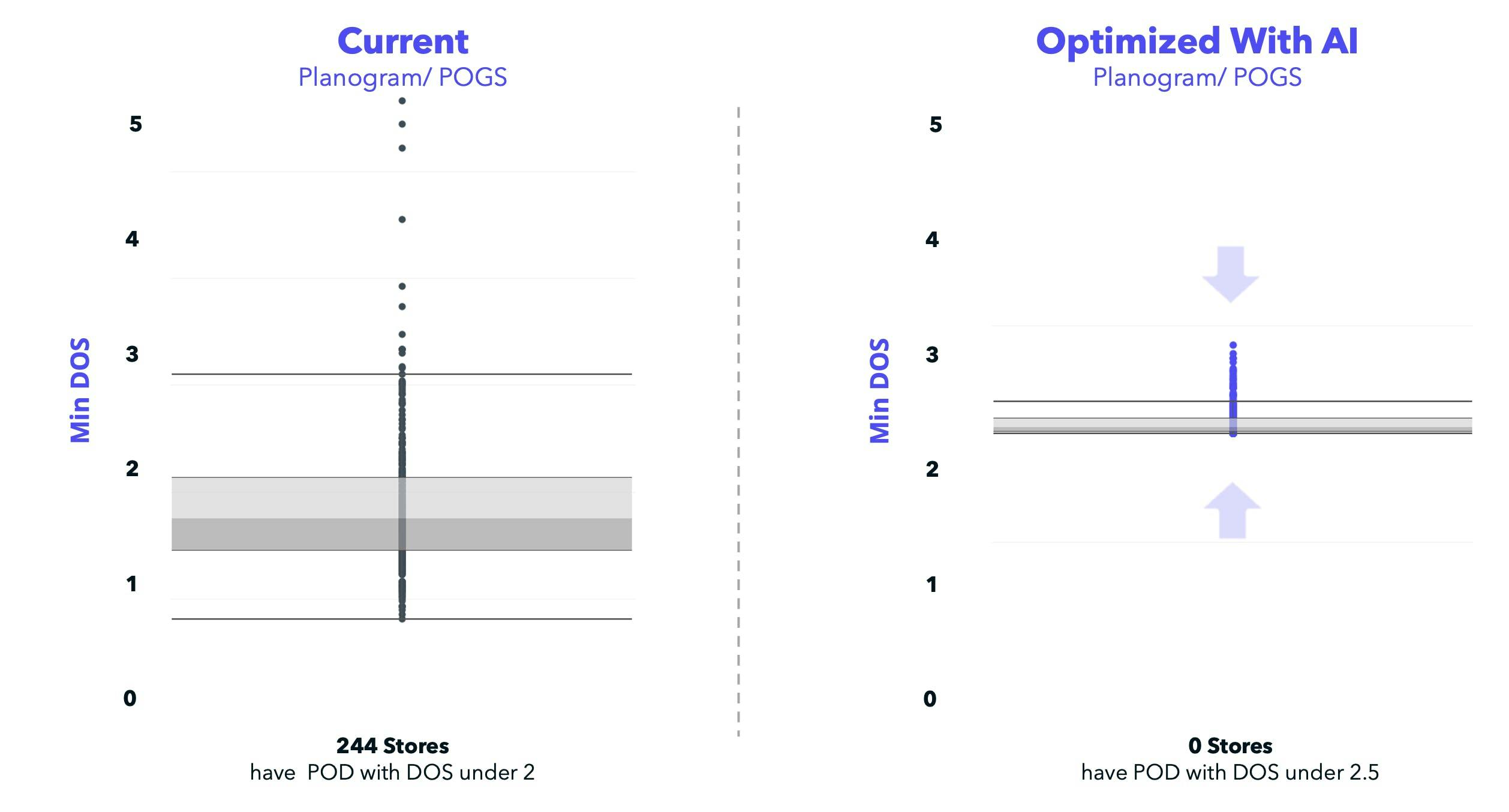
Optimizing Days of Supply with HIVERY Curate: A Closer Look at Standard Deviation Reduction
Optimizing Days of Supply (DOS) is a critical aspect of inventory management in the ever-evolving retail landscape. Striking a balance is delicate - too little supply can lead to stockouts and lost sales, while too much can result in wasted inventory and reduced profitability. AI can help optimize the standard deviation around DOS for categories. The chart below typically represents what we have found when we apply our AI and applied mathematics to a category. In addition to growing the category, in this real client example (data has been masked), we were also able to optimize this multinational food manufacturer's entire brand portfolio while improving the retailer's operational efficiency, stocks, and optimizing facings at the store level.

On the left side, you see the current base planogram. This is what our client's DOS looked like, ranging as high as five days for a few slow-moving items to 1.5 days for fast-moving items, with a standard deviation close to 1.5 days. What is striking about the chart on the left is the spread. This spread meant that the operational efficiency across 244 specific stores was poor, with many of the food manufacturer's portfolios under 2 DOS.
Using store-level data analysis and factoring non-negotiable merchandise constraints into the modelling, HIVERY Curate reduced the spread, bringing the standard deviation up to around 2.5 days and ensuring no stores had a DOS of less than 2.5. For instance, it uses constraints to maintain the category's Points of Distribution (POD) neutrality. It also controls the assortment orientation on the shelf and ensures that specific assortments that the retailer buyer deems essential are present. This ensured that assortments were optimized with locally relevant product assortments, effectively merchandised, and operationally efficient.
But how does HIVERY Curate achieve this? The answer lies in the careful adjustment of product facings on the shelf. In the base planogram, many items had single facings. After optimization with HIVERY Curate, these items increased in double and triple facings. This increase in facings gives items more days of supply, ensuring that popular products remain available for customers.
One might wonder about slow-moving items that typically have a high DOS. In many cases, these items would be deleted to improve inventory turnover. However, HIVERY Curate can retain these items if they are important in a particular store. This is another example of how HIVERY Curate's AI capabilities can provide nuanced, store-specific insights to optimize retail strategy.
AI offerings like HIVERY Curate provide a powerful approach for Consumer Packaged Goods (CPG) suppliers and retailers seeking to optimize their DOS and overall inventory management. By leveraging AI and store-level data insights, retailers can make more informed decisions, balance their inventory, drive sales growth, and reduce waste.
If you like this post, be sure to read this related one titled: Space Optimization Strategies: How AI-Driven Analytics Can Help
Related resources you might be interested in:
- Can you find individual stores that are worth going to store-specific assortments? AI can
- AI's Potential to Empower Every Business: From Pizzerias to T-Shirt Store
- How to validate shopper assumptions & find new growth strategies for your retailer
- HIVERY's AI uncovers latent shopper insights & gains industry recognition